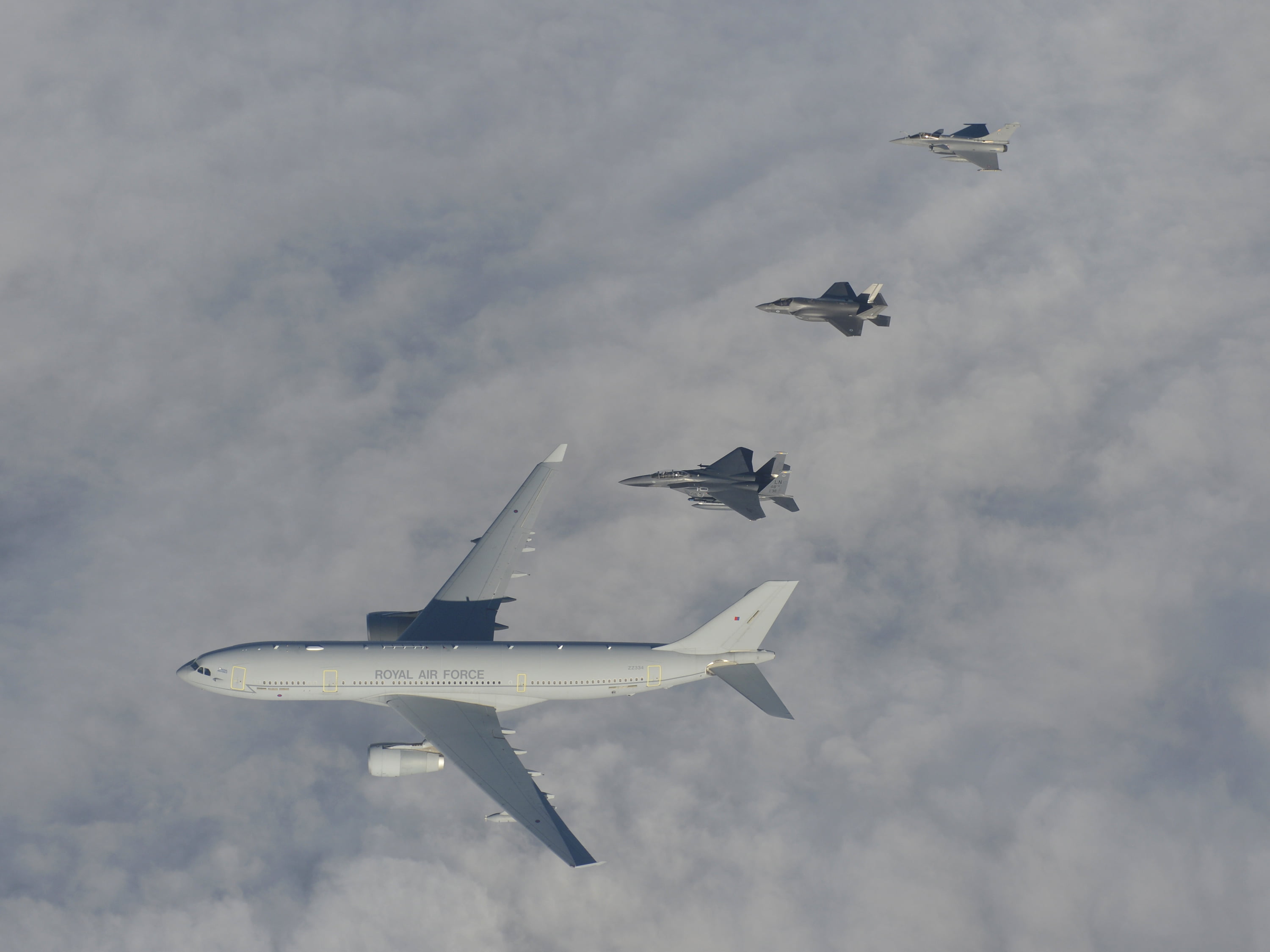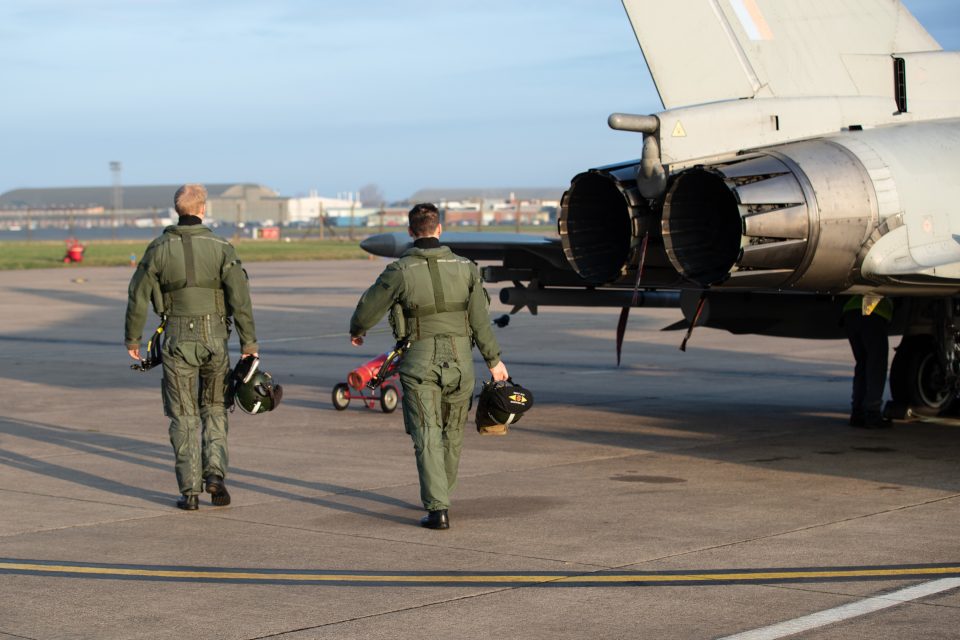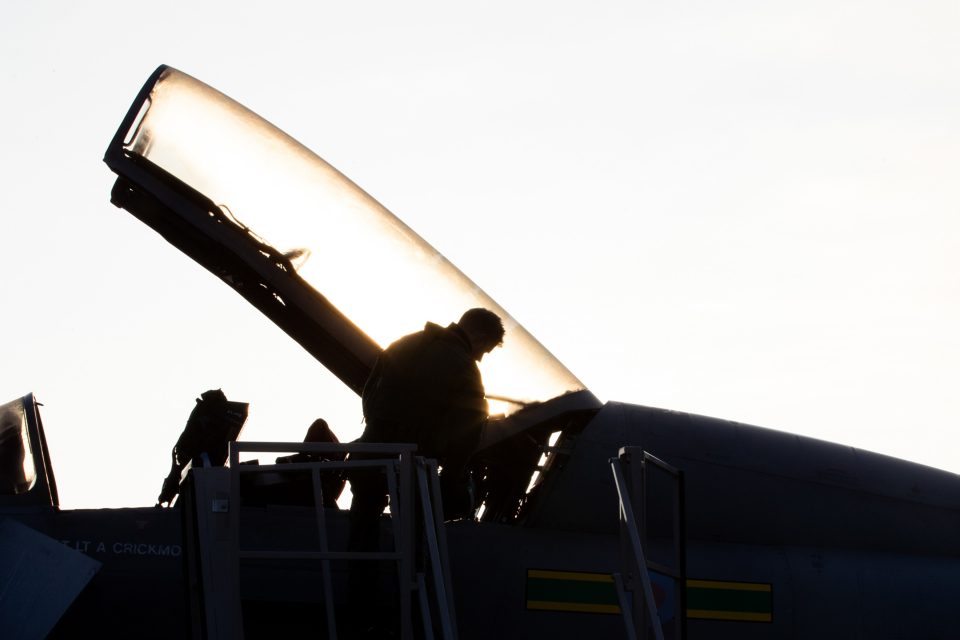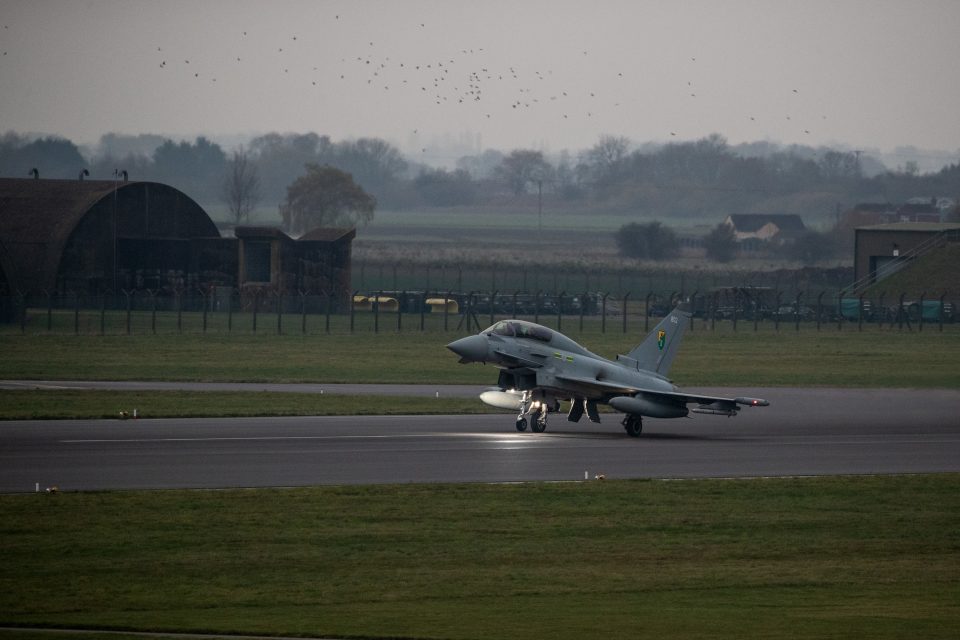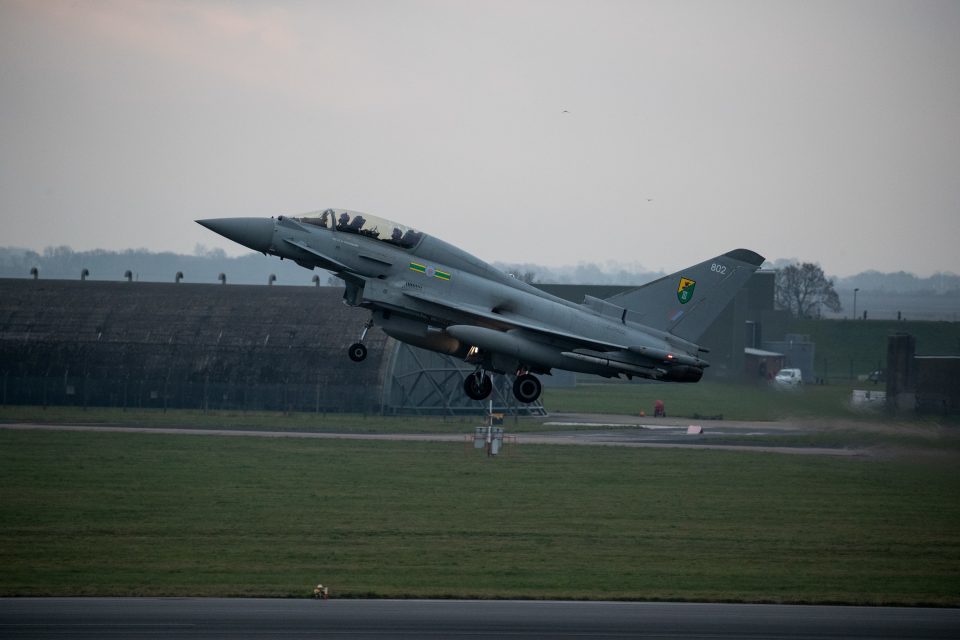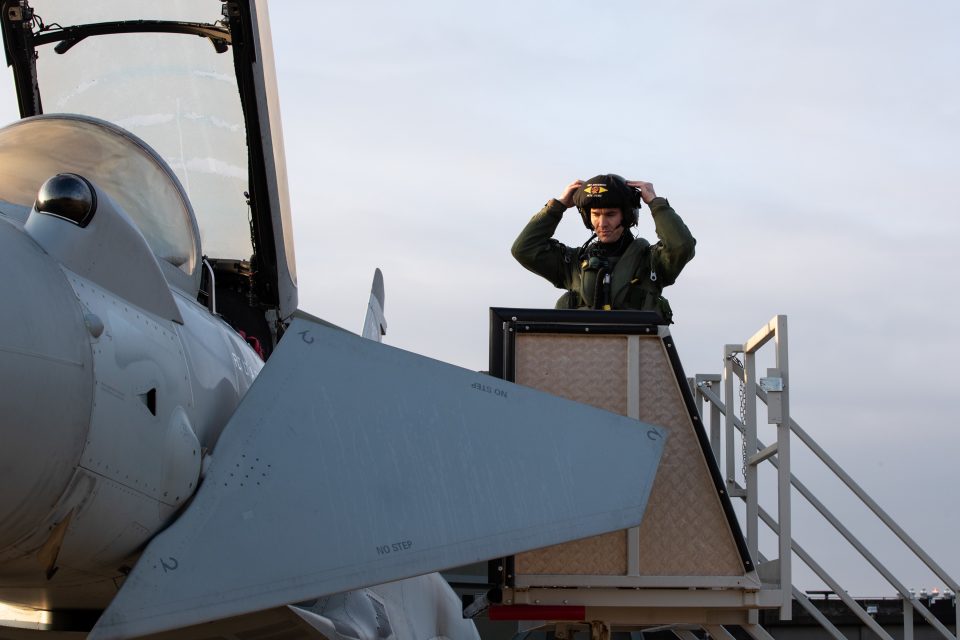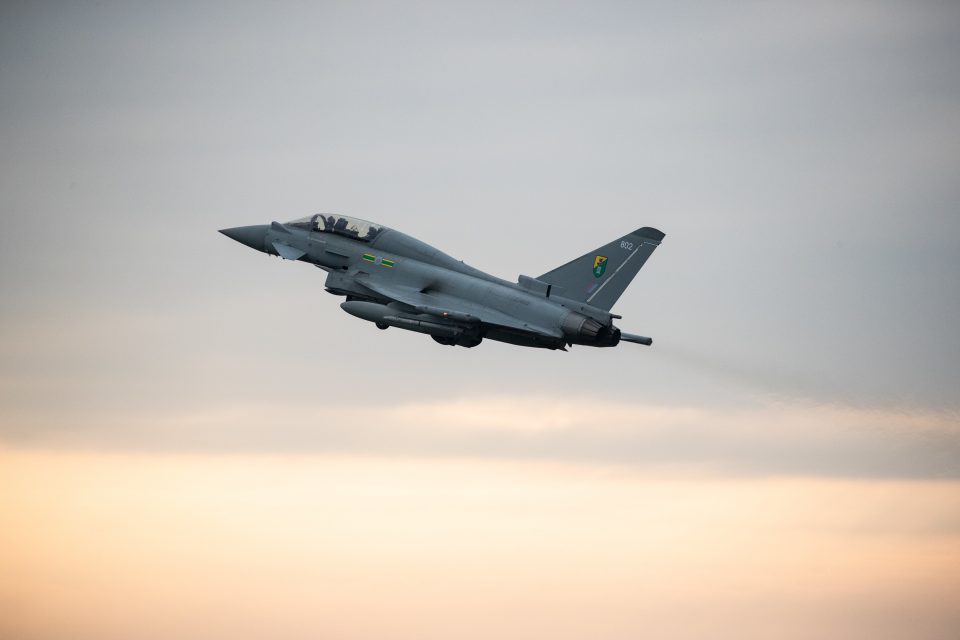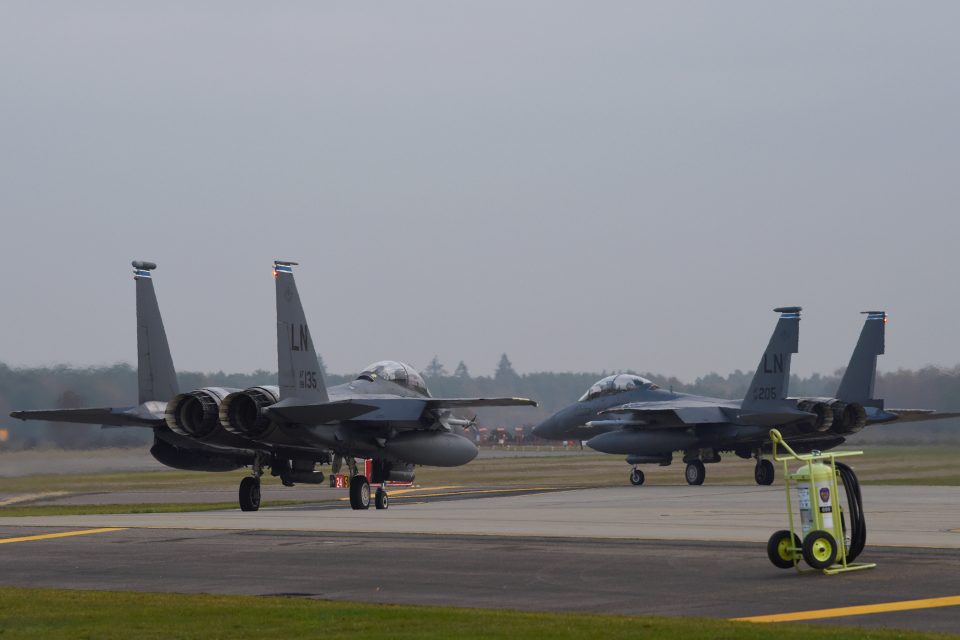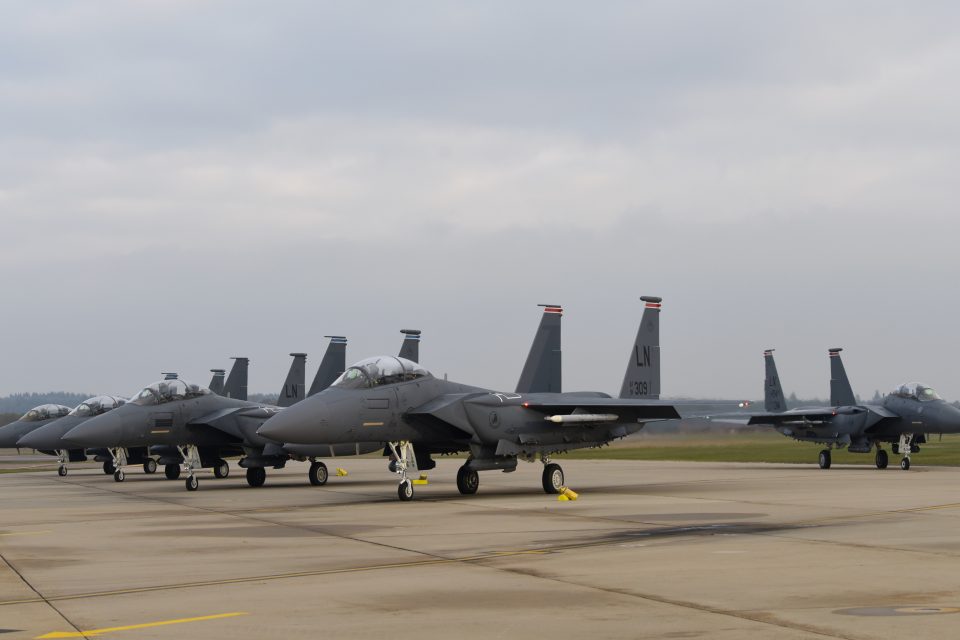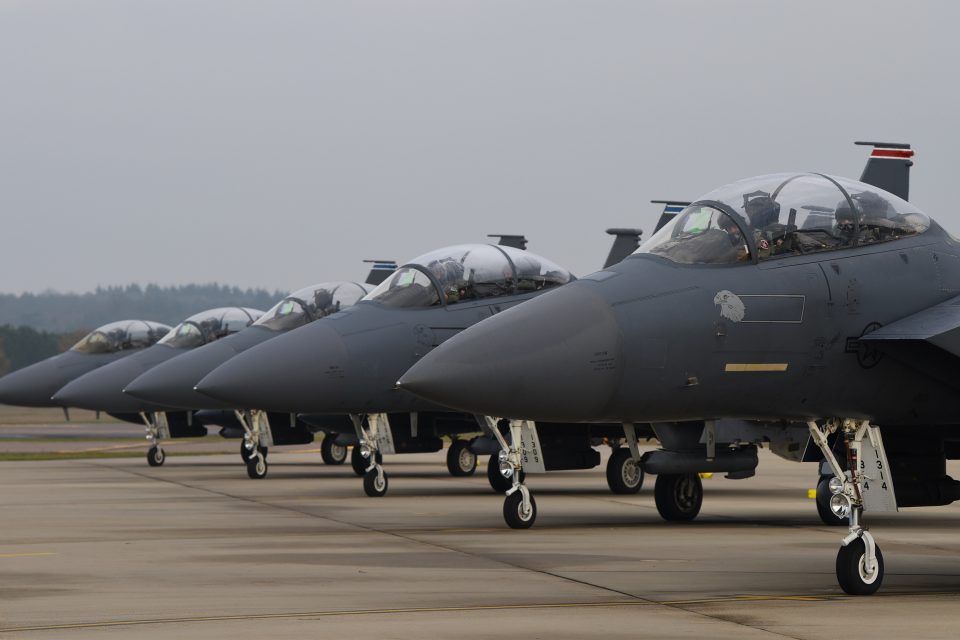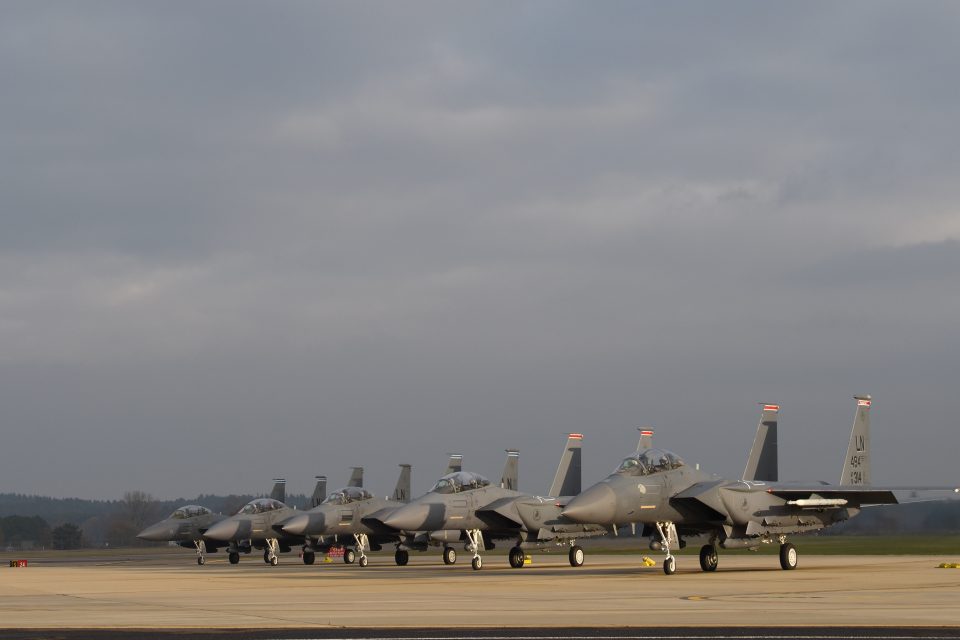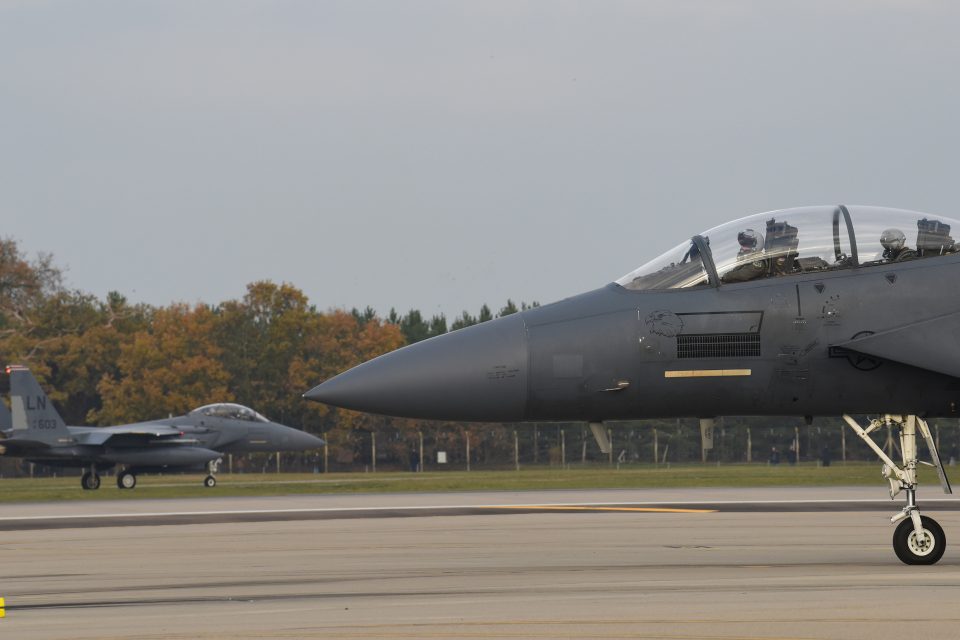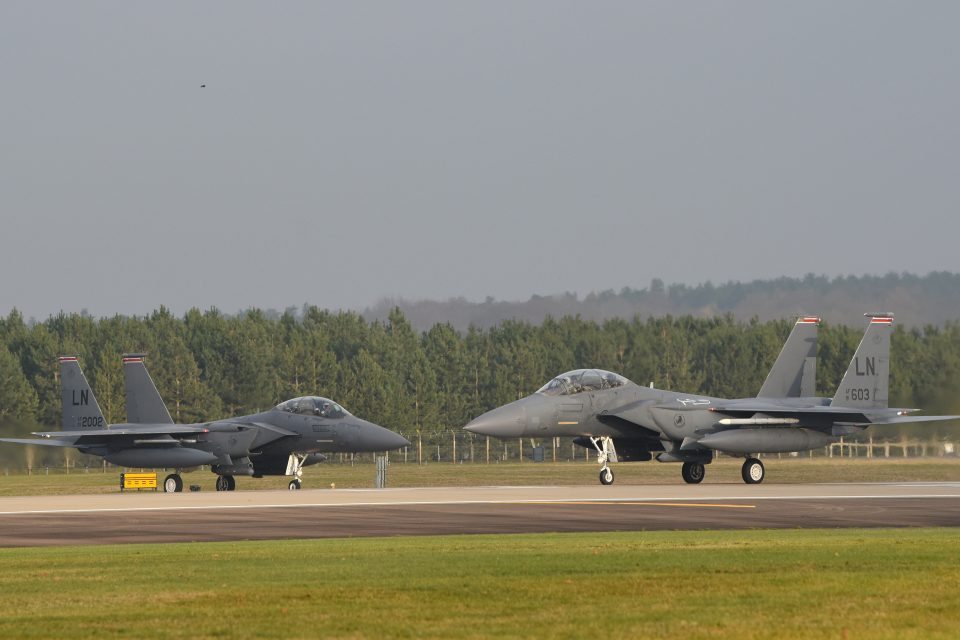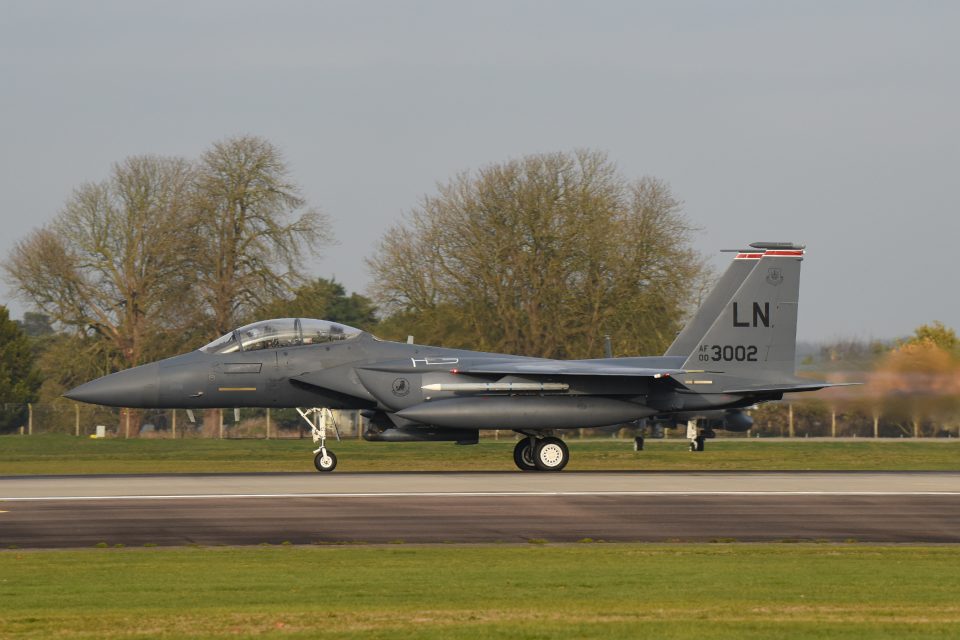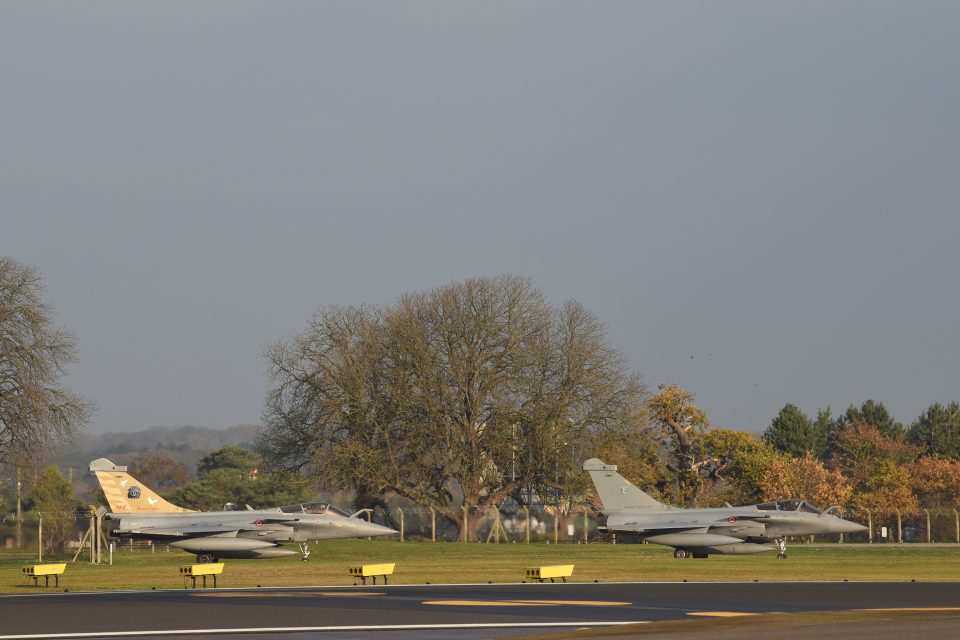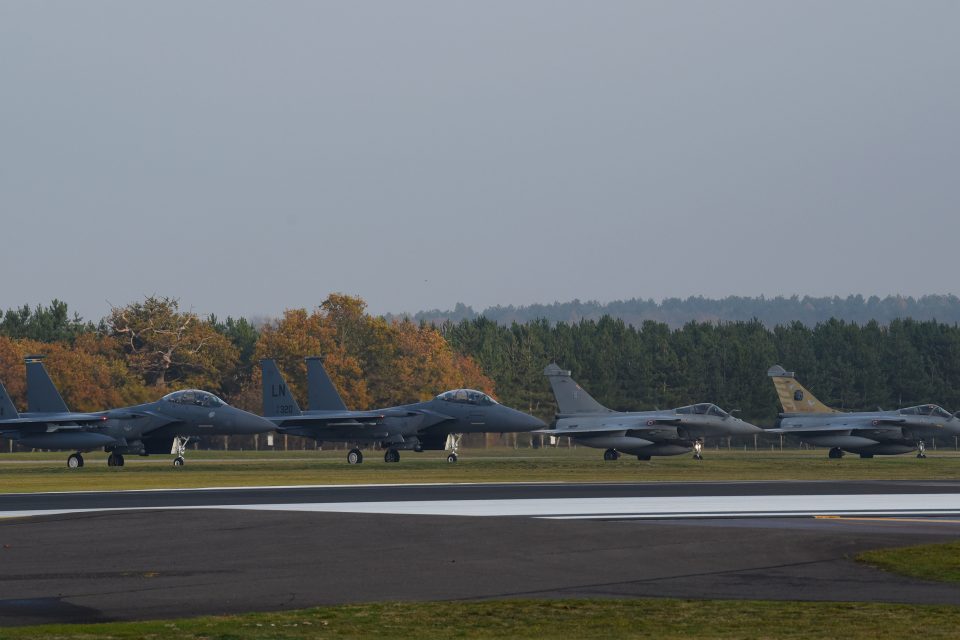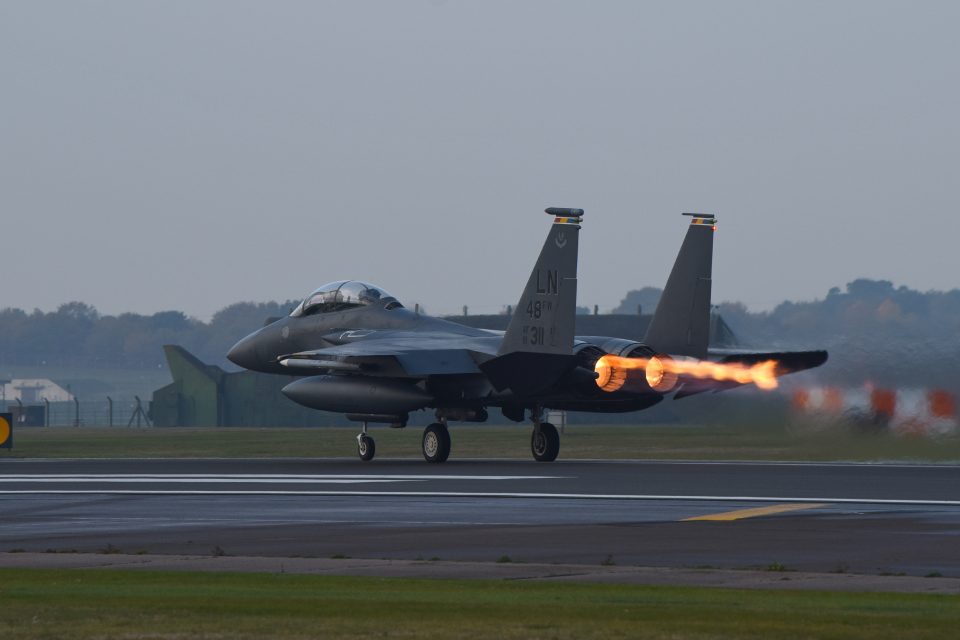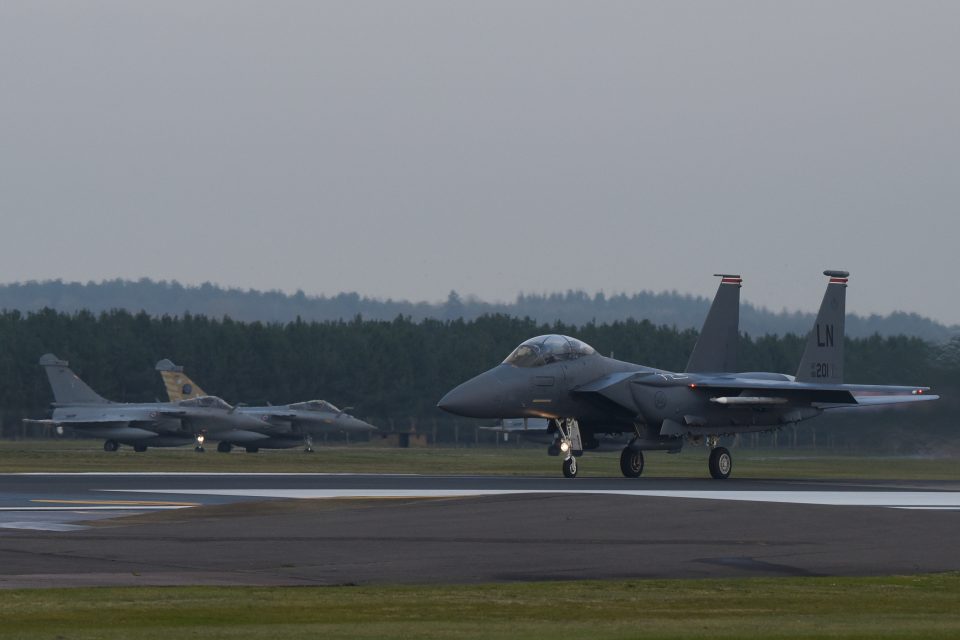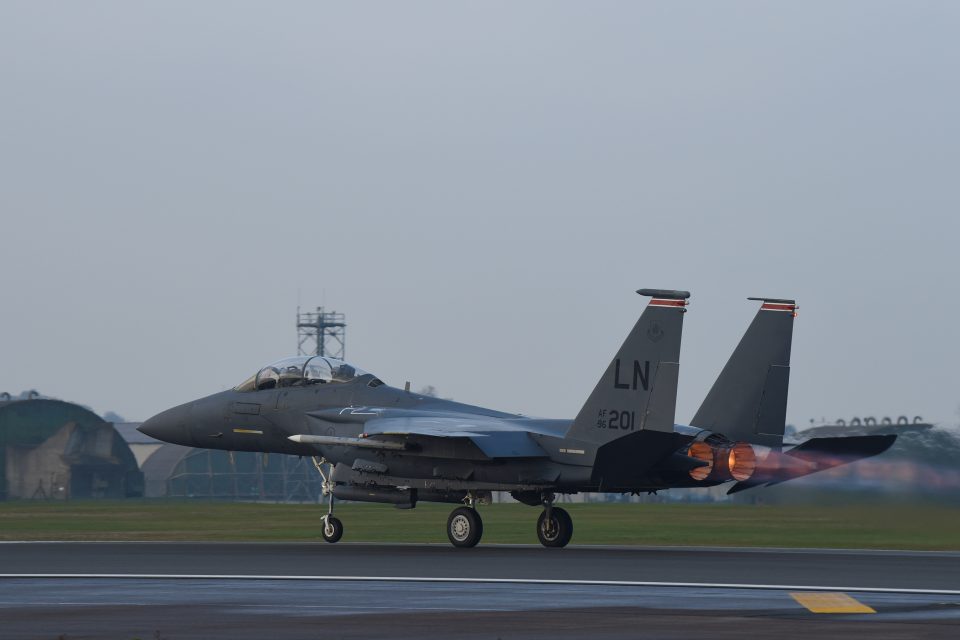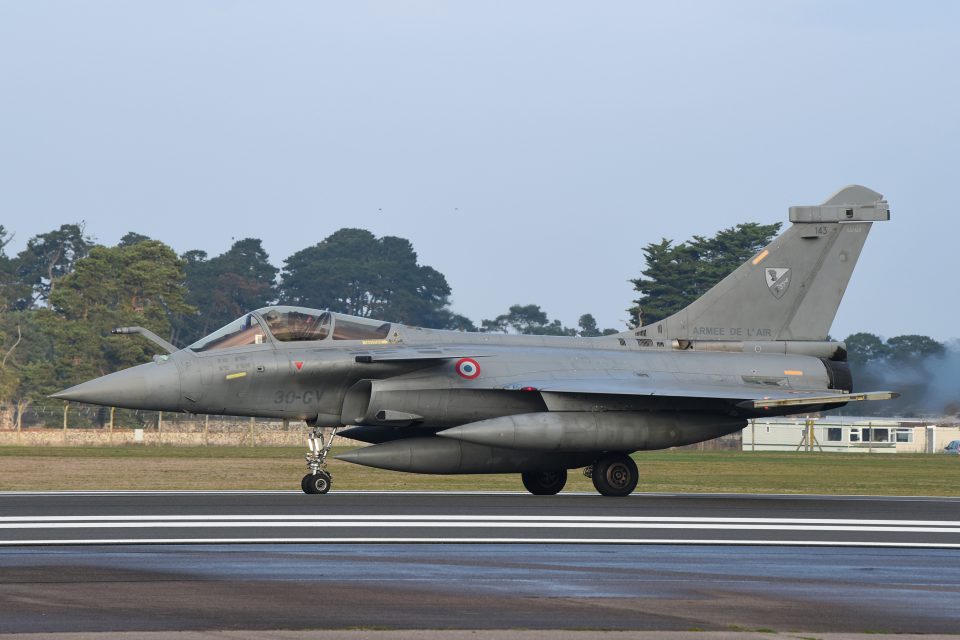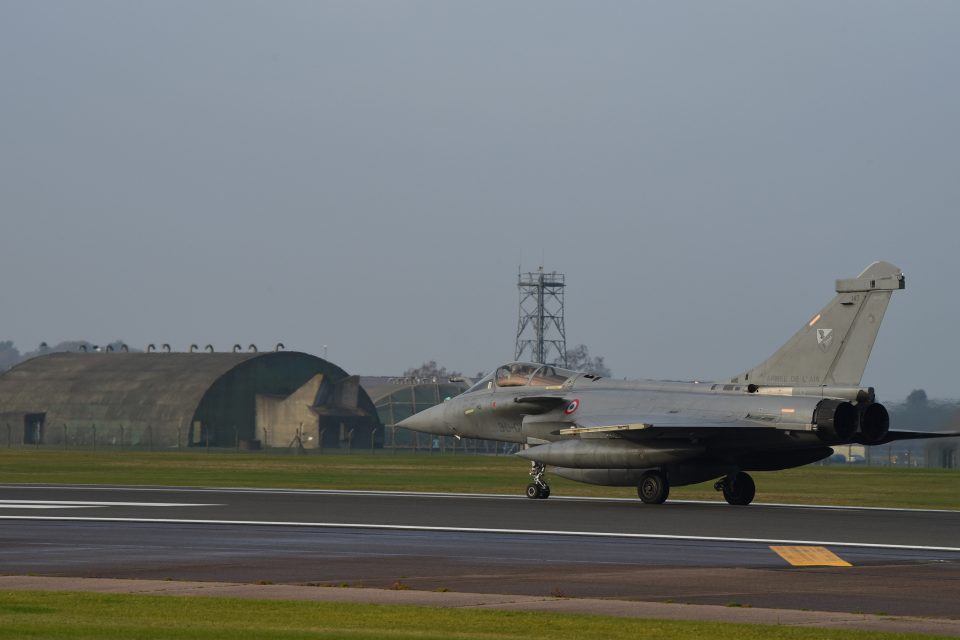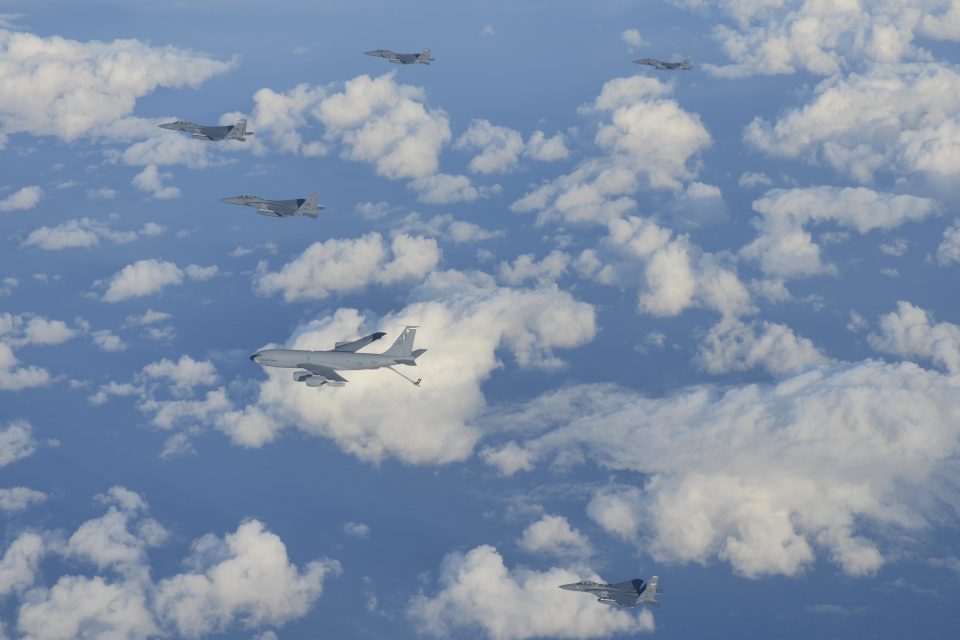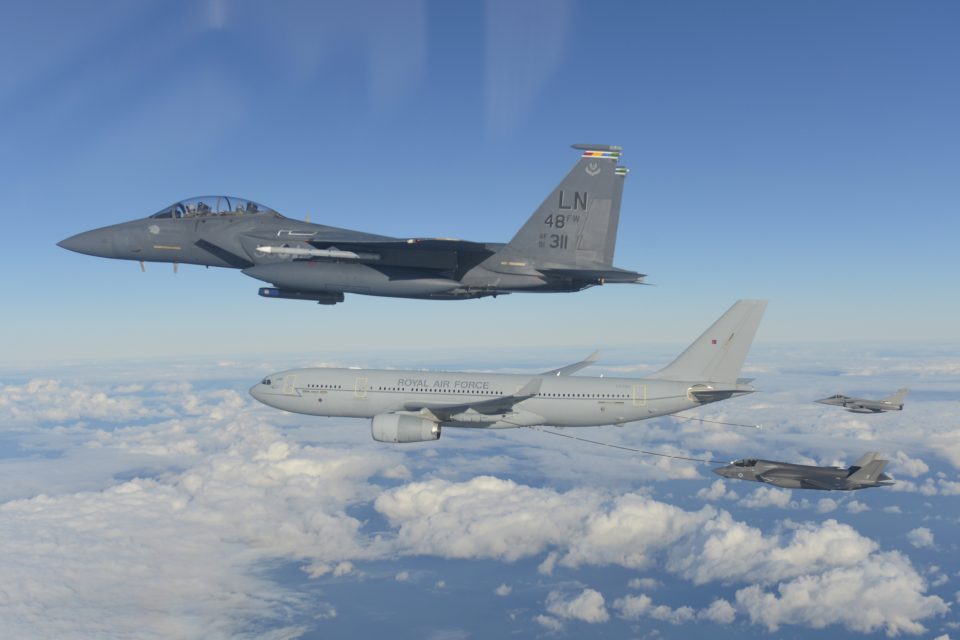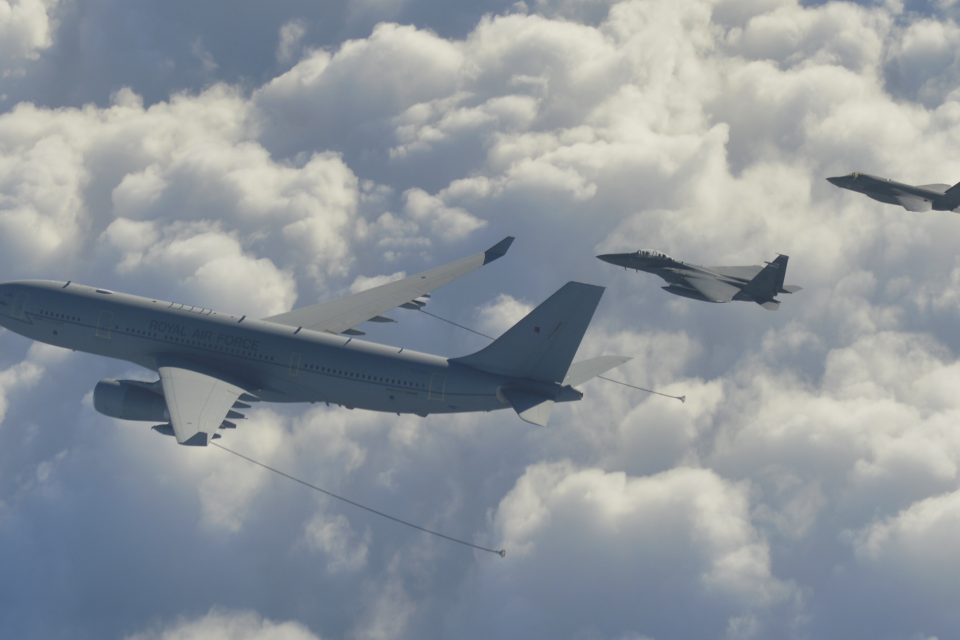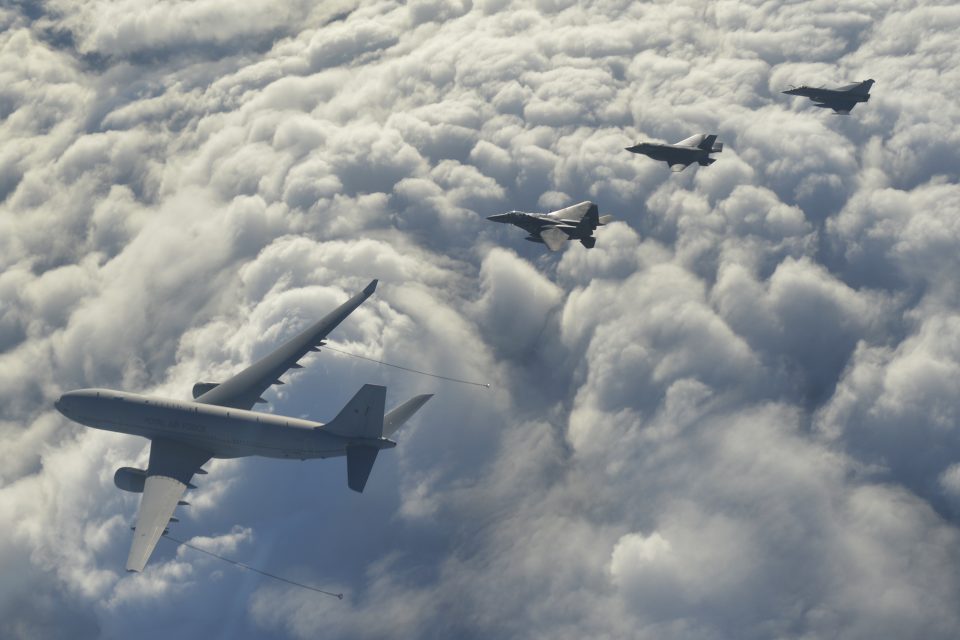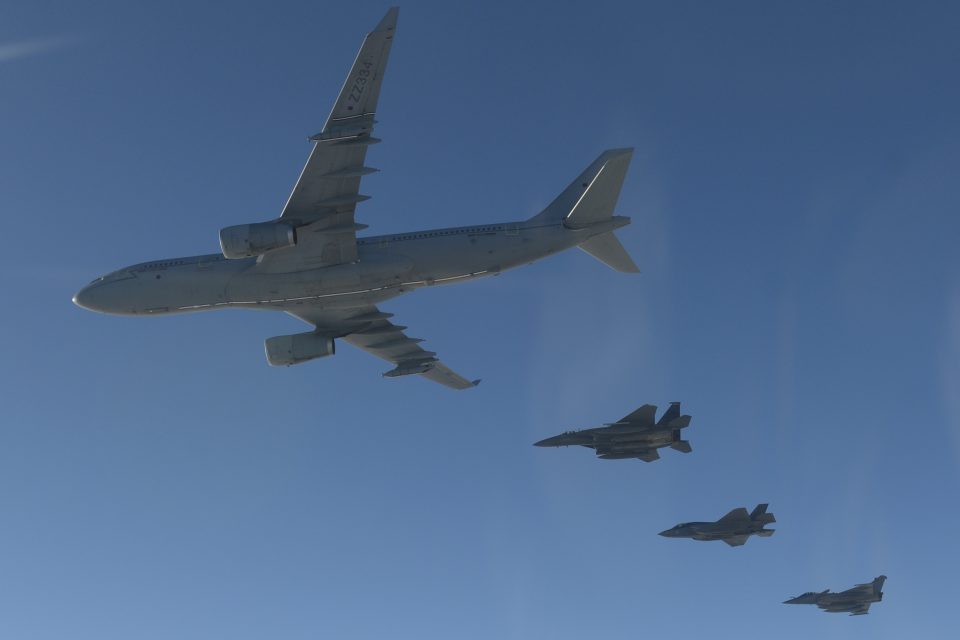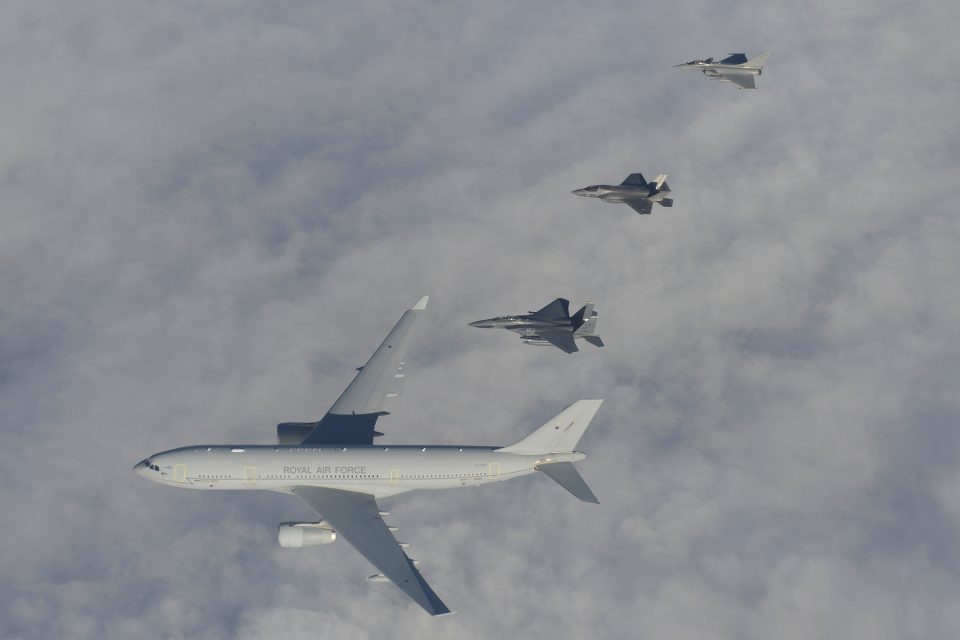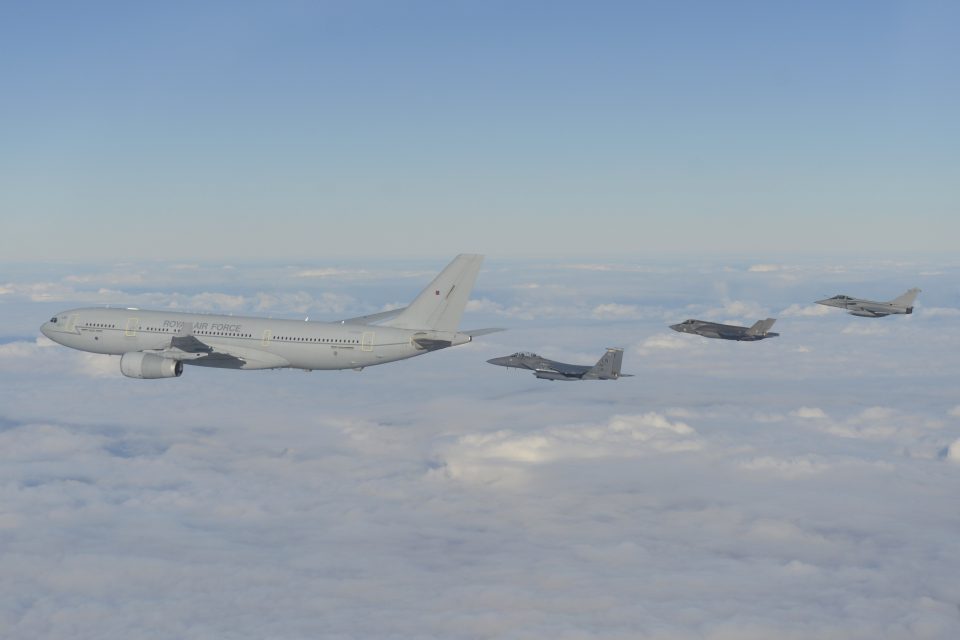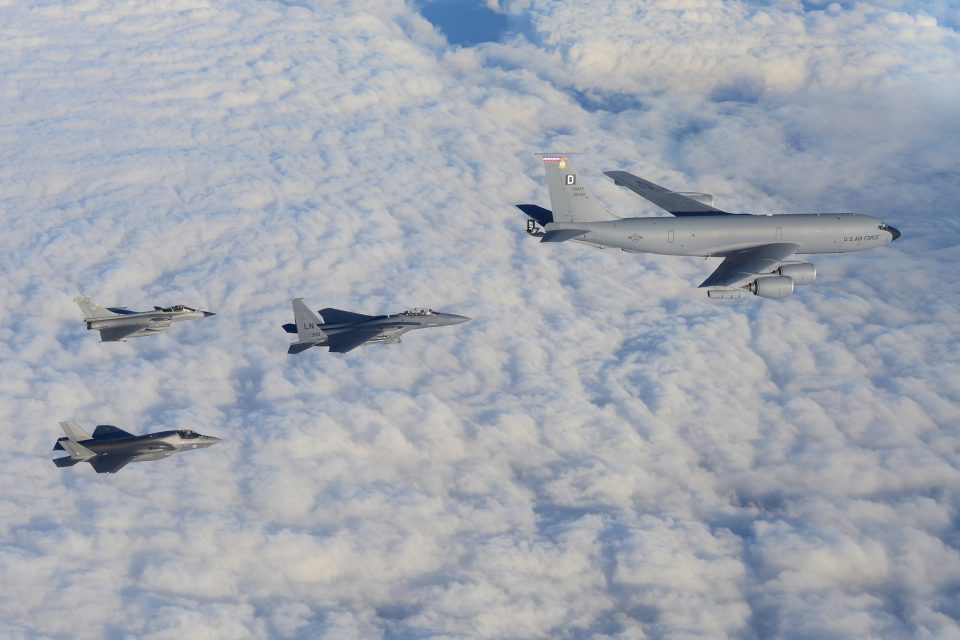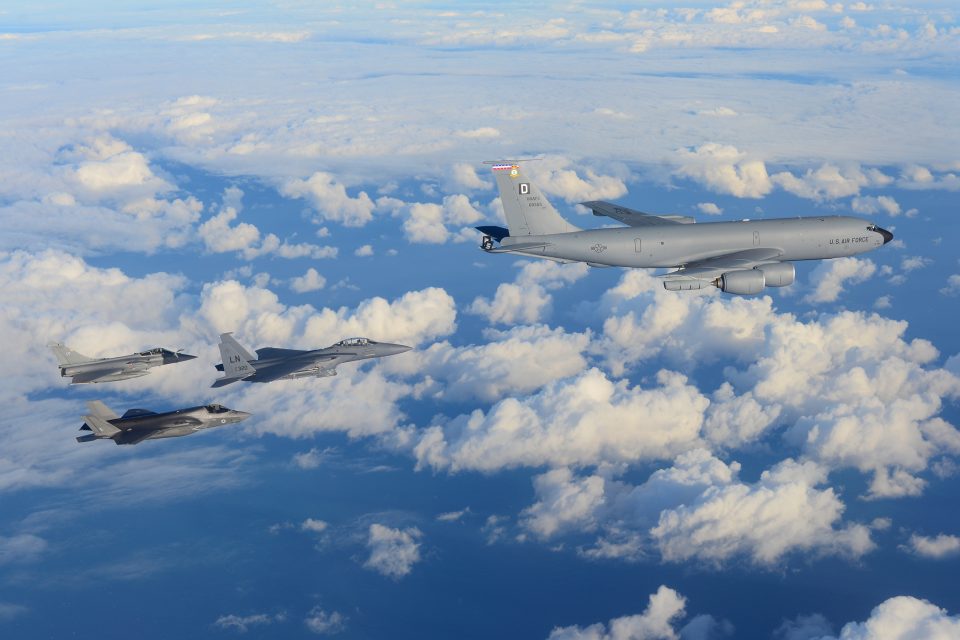Recently, the RAF hosted the latest iteration of the Point Blank exercises.
The French joined the exercise held in the UK for the first time this year. 26 fighter juets plus combat support units participated in the exercise held November 26, 2018 over the North Sea.
Two UK F-35Bs, four Typhoons, four Rafales and 16 F-15 Eagles took part in the one day drill. With the presence of the F-35, a key aspect of the exercise was working integration of the 4thwith the 5thgeneration aircraft.
The exercise draws its name from Operation Point Blank, the code name for a key portion of the Allied bomber offensive during World War II.
Since 2016, American and British units have conducted 20 Point Blank exercises with more than 400 participating aircraft. 1
According to an article by Amy McCullough published by Air Force Magazine on November 29, 2018, the key focus of the latest exercise was highlighted.
Point Blank is a grassroots effort led by lieutenants, captains, and majors to fix that, Maj. Eric Joachim, 48th Fighter Wing chief of weapons and tactics, told Air Force Magazine during a visit to the base this summer.
Joachim said when he first started flying in England in 2014, there “was no US/UK integration.”
“I’d never flown with the UK. I really never talked to a pilot with the UK up until we started doing these,” he said.
That’s not the case anymore. Since 2016, the 48th FW and its allied counterparts have conducted at least 20 Point Blank exercises, with more than 400 aircraft participating—including USAF F-22 Raptors and F-35 strike fighters rotating through theater. The exercise focuses on integrating allied fourth and fifth generation aircraft in air-to-air, air-to-ground, combat search and rescue, and dynamic targeting operations.
Though this isn’t the first time F-35 strike fighters have participated in Point Blank, it is the first time the United Kingdom’s F-35Bs have participated. RAF Marham, which is located about 20 nautical miles from Lakenheath, where USAF will beddown its own F-35As beginning in 2021, accepted delivery of its first four strike fighters this summer.
“There is quite a bit of airpower just in the southeastern part of England alone, and by 2025 we expect to increase that to about 199 aircraft as we increase the number of F-35s assigned here [at Lakenheath] and at Marham,” said Joachim, who noted that the UK also plans to “increase the number of Typhoons based at [RAF] Coningsby.”
There already have been many lessons learned regarding the requirements for fifth generation aircraft in the air and on the ranges. The surface to air emitters also are different in fifth generation aircraft, according to the document.
“Integrating these aircraft requires an increased investment into aging critical infrastructure, such as obsolete training facilities, systems, and ranges,” it states, noting that increasing the use of live, virtual, and constructive training can increase capability and reduce costs.
It should be noted that with the standup of various partner air force F-35s in the region, the role of fifth generation collaboration will go up as well.
In an article which I published in Breaking Defense in 2017, I highlighted the process of change.
Hidden in plain view is the fact that the UK is standing up its F-35 base PRIOR to the United States. And that the first squadron for the UK and Australia for that matter is being trained and equipped in the United States prior to their arrival in each of their countries. This is a case of the pilots and maintainers learning common approaches from the ground up PRIOR to standing up the new F-35 bases.
And not only that, but the facilities being established in Europe can provide a key sustainment and operational enterprise which the US as well as allies can leverage in common. Or put bluntly, the U.S. if its follows an innovative sustainment model can gain significant savings and operational advantages from leveraging the European infrastructure, rather than flying in parts and other materials to support ITS jets. The impact of savings to the lift and tanking fleet for the USAF could be very significant indeed from coming up with a 21st century approach to sustainment, support and sortie generation.
It is not just about the US sending advanced jets to Europe; it is about the US being smart enough to embed its jets in a broad scale renorming of airpower associated with the coming of the F-35 to a significant part of the allied combat fleet at virtually the same time.
Last year I visited RAF Lakenheath and recently visited both RAF Marham and RAF Lakenheath to discuss the progress in standing up F-35 bases at both facilities.
The F-35 is a data rich aircraft and needs to see a 21st century basing infrastructure built to support it as is the case of with some other aircraft like Wedgetail, P-8 and Triton. The UK and the US are rebuilding in common their respective bases from which they will operate their F-35s.
During my visit to Marham, I toured the new facilities and discussed the way ahead with senior staff.
There is a staff of 17 at the Lightning Force headquarters supporting the operational standup with nine specifically focused on the infrastructure aspects. They are busy simply in order to have the base ready next year to receive their first contingent of F-35Bs from their current base, which is in the United States.
The base will have a fully operational, training and support capability. Training, maintenance and various centers are being stood up. At the heart of the effort will be the National Operations Center in which logistics and operations are collocated and the U.S. will have personnel in this center as well.
There are multiple synergies involved with the F-35 and the standup of the Marham Air Base, two of which highlight the US-UK working relationship.
The first is the synergy from America to the United Kingdom and back again. The UK has operators at Pax River, Edwards, Eglin and Beaufort Marine Corps Air Station. The planes coming from Beaufort will provide the standup for the first RAF squadron, namely,. 617 squadron.
The second synergy is between the standup among bases and lessons learned. Marham is being stood up and generating operational lessons learned back to the United States, both in terms of the U.S.’s standup of its own bases abroad and at home, and, notably in terms of shaping a new operational dynamic for RAF Lakenheath.
The USAF F-35s at Lakenheath can become integrated into the operational, training and support elements in the UK as well, shaping a new approach for the USAF as well.
As Wing Commander Butcher, the CO of 617 Squadron, underscored the possibilities:
“We want to take forwards everything that we’ve done in the pooling and implementation agreement in the United States, and try and see how we can transpose that into a UK model.
“We’re looking to have jets taking off, F-35A’s taking off at Lakenheath. Well, what if they have an issue and they need to land in Marham. Rather than take the time to move people, spares etc from Lakenheath up to here, what’s to say that we couldn’t conceptually have some maintainers from 617 Squadron repair the jet, sign off, send it flying again.
“Lakenheath is going to be busy base with the closure of Mildenhall. Increased efficiencies working with us would make sense.
“Could we potentially have F-35As operating out of Marham on a daily basis?
“How do we organize hot pit operations on each other’s base?
“One can easily see how that could buy you a lot of combat flexibility, in terms of how you might do maintenance operations.”
And visiting RAF Lakenheath, the synergies underway are obvious as well.
According to Col. Evan Pettus, the Commander of the 48th Fighter Wing at Royal Air Force Lakenheath, England:
“We do not have a closer partner than the UK. We will both operate the F-35 from Marham and Lakenheath respectively, which are very close to one another.
“Shaping synergy between the two bases is clearly an important objective. We are working this process in a step-by-step manner, from understanding how we might operate F-35As from Marham and F-35Bs from Lakenheath, to deeper sustainment and training opportunities as well.”
But the potential is even greater for synergy from the two bases working together across the region. During my visit last year I discussed the impact of the synergy of the US and the allies standing up at the same time the new air combat force with then Col. Novotny, the 48th Fighter Wing Commander, and now General Novotny at the Air Combat Command.
View from RAF Voyager During Exercise Point Blank 18-3 from SldInfo.com on Vimeo.
“We are not flying alone; but joined at the hip. We will be flying exactly in the area of interest for which the plane was designed and can fly together, maintain together, and operate together leveraging the air and sea base for which the F-35 B will fly from as well. It is a unique and strategic opportunity for the USAF and for the nations.”
General Novotny added that the two bases joined at the hip can provide a key strategic impact as well.
“As we get this right, we can bring in the Danes, the Norwegians and Dutch who are close in geography and the Israelis and Italians as well to shape the evolving joint operational culture and approach. Before you know it, you’ve got eight countries flying this airplane seamlessly integrated because of the work that Lakenheath and Marham are doing in the 20 nautical miles radius of the two bases.”
The RAF, the RAAF, the USAF and the USMC are already learning how to integrate the F-35 into the air combat force at Red Flags, and recently have included the French Air Force in a Langley trilateral training exercise. But integration will be accelerated by the integration of normal operations from common bases throughout the European region as well.
As Novotny put it: “Doing Red Flags requires bring forces to Nellis and expending monies to come to the exercise, clearly an important task notably in learning to fly together in high intensity warfare exercises. But what can be shape from the RAF Marham and Lakenheath bases is frequency of operations with core allies flying the same aircraft.”
“The same aircraft point can be missed because the UK did not fly F-16s, the Norwegian, the Danes and the Dutch do. And the USAF does not fly Typhoons and Tornados; the UK does. Now they will ALL fly the same aircraft.”
“I did two OT assignments and we worked to get into Red Flag when we could to do joint training. Here we can do that virtually every day. We reach the Dutch training airspace, and can work with the Dutch, with the Brits, with the Germans, with Typhoons, with F3s, with the NATO AWACS. We take off and we fly 30 minutes to the east and we make it happen. It is Red Flag as regular menu; rather than scheduling a gourmet meal from time to time.”
https://sldinfo.com/synergy-and-building-out-extended-nato-defense/
And it is not only European allies who can engage in the cross learning.
The Aussies and the Dutch are standing up their F-35s at about the same time, and cross learning between the Aussies and the F-35 European enterprise is clearly already underway based on my interviews in Australia as well.
In short, the UK is leading the way in shaping a new infrastructure for a 21st century air combat force and with its operational footprint at RAF Lakenheath, the USAF is well positioned to interact with this dynamic of change.
With the RAF and the USAF setting up four squadrons of F-35s between them at two nearby RAF bases, there is a clear opportunity to shape a common sustainment solution.
And the impact of so doing could be significant on the North Sea neighbors, namely, the Danes the Norwegians and the Dutch. This is clearly a key way ahead in building out NATO capabilities going forward, which provides a 21st century example of burden sharing which delivers relevant capabilities.
The video shows footage from the cockpit of a RAF Voyager during Exercise Point Blank 18-3, a recurring large force exercise designed and cohosted by the Royal Air Force and the 48th Fighter Wing. 11.27.2018. Video by Staff Sgt. Taylor West .48th Fighter Wing Public Affairs. (Copyright RAF Brize Norton.)


